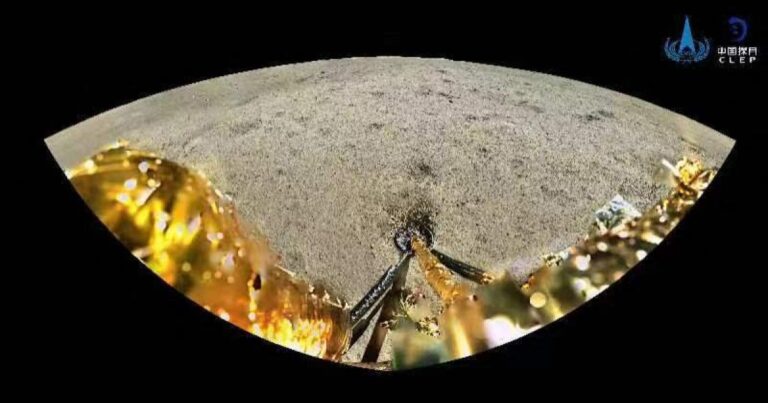The probe’s safe departure from the moon means China is one step closer to becoming the first country to bring back samples from the far side of the moon.
A Chinese spacecraft carrying rock and soil samples from the far side of the moon has lifted off from the lunar surface to begin its journey back to Earth, state media said.
Tuesday’s achievement was a world first and the latest leap for Beijing’s decades-long space programme, which aims to send a crewed mission to the moon by 2030.
The Chang’e-6 probe’s elevator was launched at 7:38 a.m. local time on Tuesday (11:38 p.m. GMT) and has entered its designated orbit around the moon, Xinhua reported, citing the China National Space Administration (CNSA).
He described the move as “an unprecedented achievement in the history of human lunar exploration.”
The Chang’e-6 probe was launched last month and its lander touched down on the far side of the moon on Sunday. The probe used a drill and a robotic arm to excavate soil above and below the lunar surface, Xinhua said.
After successfully collecting samples, Chang’e 6 was announced as the first to raise the Chinese flag on the far side of the moon.
The spacecraft deposited the samples it collected as planned into a container inside the probe’s ascent section, the agency quoted the CNSA as saying.
The container will then be transferred to a re-entry capsule, which is scheduled to return to Earth in the desert of China’s Inner Mongolia region around June 25.
Missions to the far side of the moon will be more difficult because it faces away from Earth and would require relay satellites to maintain communications, and the terrain is rougher and there are fewer flat areas to land on.
According to Xinhua, the probe will land in the Antarctic-Aitken Basin, an impact crater formed more than 4 billion years ago that is 13 kilometers deep and 2,500 kilometers in diameter.
The crater is the oldest and largest of its kind on the moon and could provide the oldest information about the moon, Xinhua said, adding that the giant impact may have ejected material from deep within the surface.
The mission is the sixth in the Chang’e lunar exploration program, named after the Chinese moon goddess, and the second designed to return samples from the lunar surface after Chang’e-5, which returned samples from the near side of the moon in 2020.
Scientists around the world are closely watching the return of lunar samples, hoping that any soil collected by Chang’e-6 will help answer questions about the origins of our solar system.
China’s moon program is part of an intensifying competition with the United States, which remains the leader in space exploration, as well as other countries such as Japan and India.
China has launched its own space station, the Tiangong, into orbit and regularly sends crew members to it.
The emerging world power aims to put a human on the moon by 2030, which would make it the second country after the United States to do so.
The United States is planning to land astronauts on the moon again for the first time in more than 50 years, but space agency NASA pushed back the target date to 2026 earlier this year.

